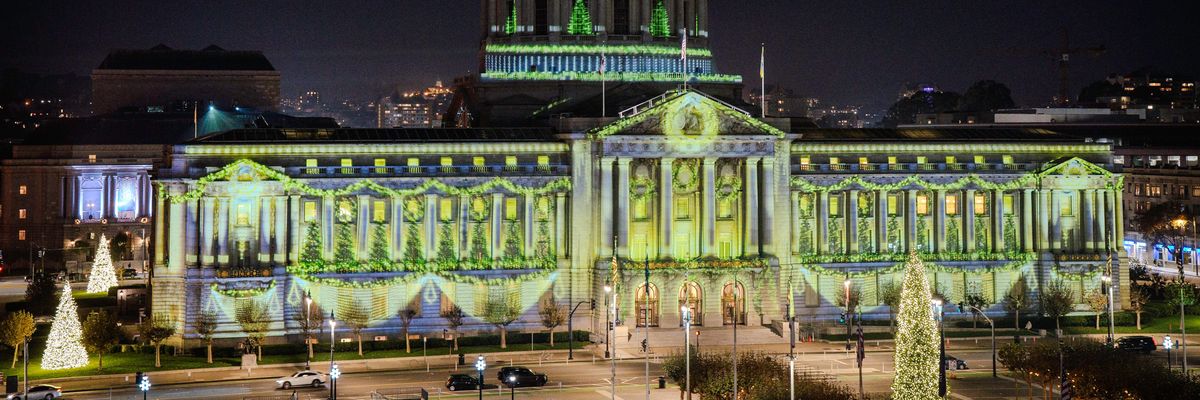Some 15 years ago. Brian Sheehy "caught the collecting bug" while scouring antique fairs and flea markets for authentic Prohibition-era artifacts to fill Bourbon & Branch, the San Francisco speakeasy that would come to redefine cocktailing in the city.
As he and his team at Future Bars continued opening new drinking establishments, the hunt for interesting decor continued, with one theme that kept popping up: decorative whiskey decanters emblematic of midcentury Americana. He bought them and stuck them in storage without a second thought. Then, serendipity walked into opening night of Sheehy's subterranean downtown bar Local Edition: A woman who had worked in the same Hearst building for 50 years came into the bar to celebrate her retirement and she offered up her late husband's collection of bottles, a stash of 100 of those same collectible decanters, whiskey still intact.
"At the end of the night, we opened one and tasted it and it was phenomenal. It blew us away, and we knew we were onto something. So we put them in storage and said if we ever got enough of these decanters, we would open a bar," Sheehy remembers.
Then, fate came knocking in 2020 when Izzy's Steakhouse restaurateur Sam DuVall passed away. His daughter called and offered up her dad's collection of hundreds of decanters. This year, all these forgotten pieces of American history took their place on the top shelf—well, every shelf—at Future Bars latest venture, Bottle Club Pub.
The story of these decanters dates back to Prohibition when everyone was drinking whiskey. But all that changed after WWII, when the troops returned with a taste for flavors and beverages from around the world. Interest ticked up for wine, beer, rum, and vodka, and America's whiskey distilleries were left with way too much product and no one to drink it. Desperate to offload the excess, Jim Beam created specialty bottles, commemorating the brand's home state of Kentucky, to be given as gifts. Commemorative decanters caught on and folks began collecting. The very first "bottle club" was born in Berkeley in 1952, followed shortly after by a second in San Francisco. The bottles enjoyed a heyday until the 1980s.
It is estimated that around 3,000 unique whiskey decanters exist today; Bottle Club Pub, which is decorated with Mad Men vibes and vintage advertising, can boast a collection of some 1,600 decanters which act both as display and as vessels for cocktails and large batch punch bowls.
Check out a few of the most notable decanters from Bottle Club Pub's collection.
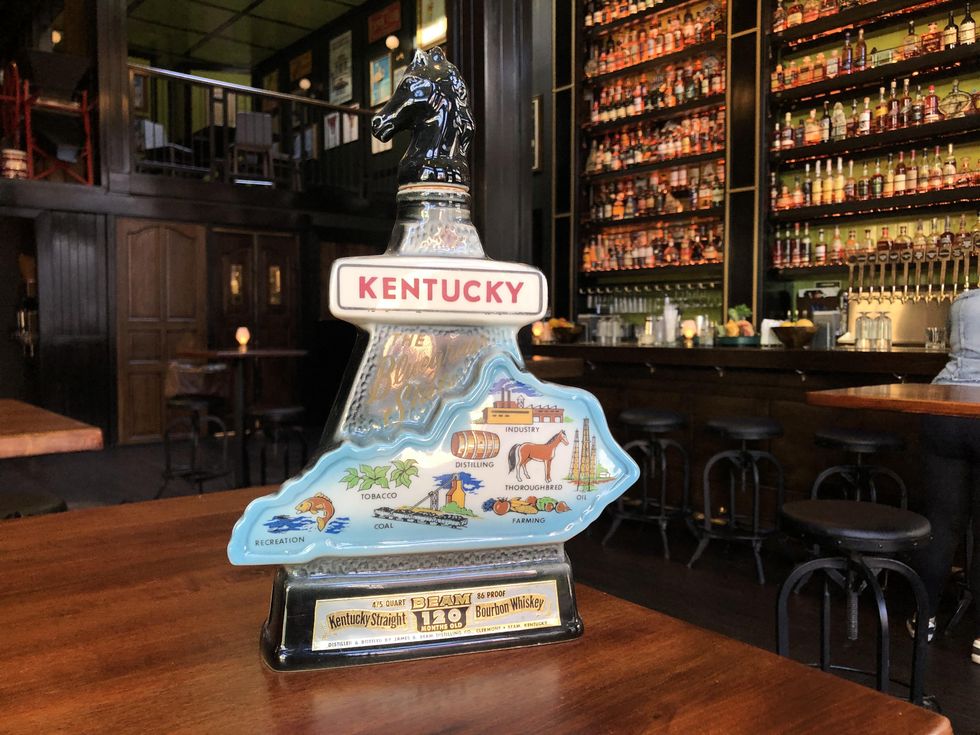
Jim Beam Kentucky State Decanter, 1967
Though Jim Beam made its first Kentucky decanter in the 1950s, Sheehy explains that 1967 was a peak year when decanters really came into their own. He views this bottle as a significant for its glimpse at how the brand defined the priorities of the Bluegrass State at time—among them tobacco and coal. "The question is, if you were going to re-do this decanter in 2022, what would Jim Beam and Kentucky put on it now?"
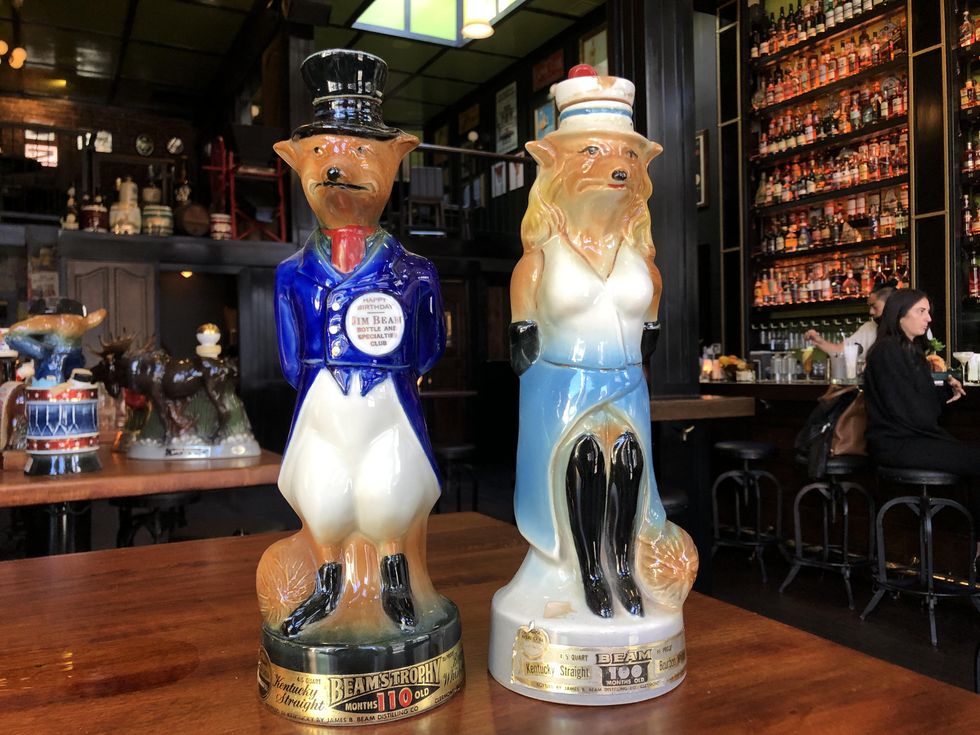
Jim Beam Bottle + Specialties Club Foxes
In 1958, the first Bottle Club Association held a convention. There were about 200 people in attendance, but as it gained popularity and they reached 1,000 attendees, the group decided to make it own decanters. Though Sheehy hasn't been able to identify which year this foxy decanter duo was made, he notes the props—the lady fox holds a rolling pin behind her back while the male fox holds a cane—as a hint at their era of origin.
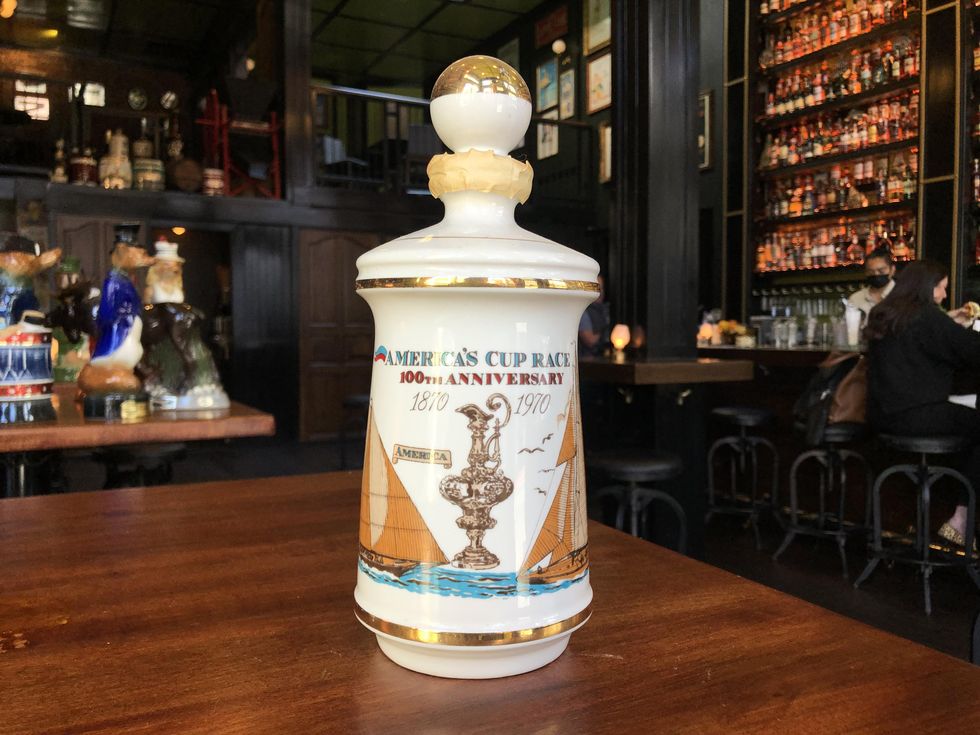
America's Cup 100th Anniversary, 1970
This decanter was made to mark the the 100th anniversary of the America's Cup, which took place in Newport, Rhode Island. The victors from each race over the years are listed on the back of the bottle. Sheehy was especially excited by this bottle because it contains the very sought after Pappy Van Winkle whiskey, made by Stitzel-Weller Distillery. If someone found this bottle completely sealed today, they'd have "struck gold," he says The bottom of the decanter says "Old Fitzgerald," which Sheehy explained is the name of the distillery where Stitzel-Weller moved to in the 1980s, a tidbit of history for true whiskey enthusiasts.
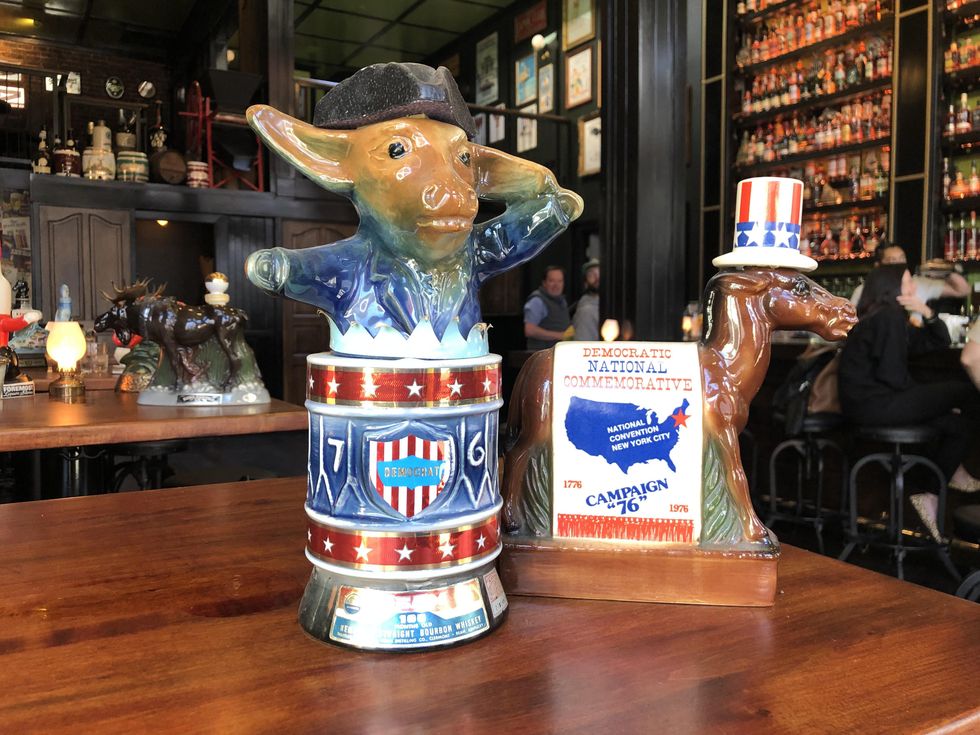
RNC, 1962 / DNC, 1976
Even the Republican and Democratic National Conventions got in on the decanter action, giving specialty bottles shaped like elephants and donkeys to candidates and party members. The 1962 elephant decanter is also a great example of how the distilleries would try to pass off old whiskey (which people did not want at the time) as younger than it actually was. They aged it by month, with "100 months" being more ambiguous than eight years. At the 1976 DNC, there were two versions of the democratic donkey.
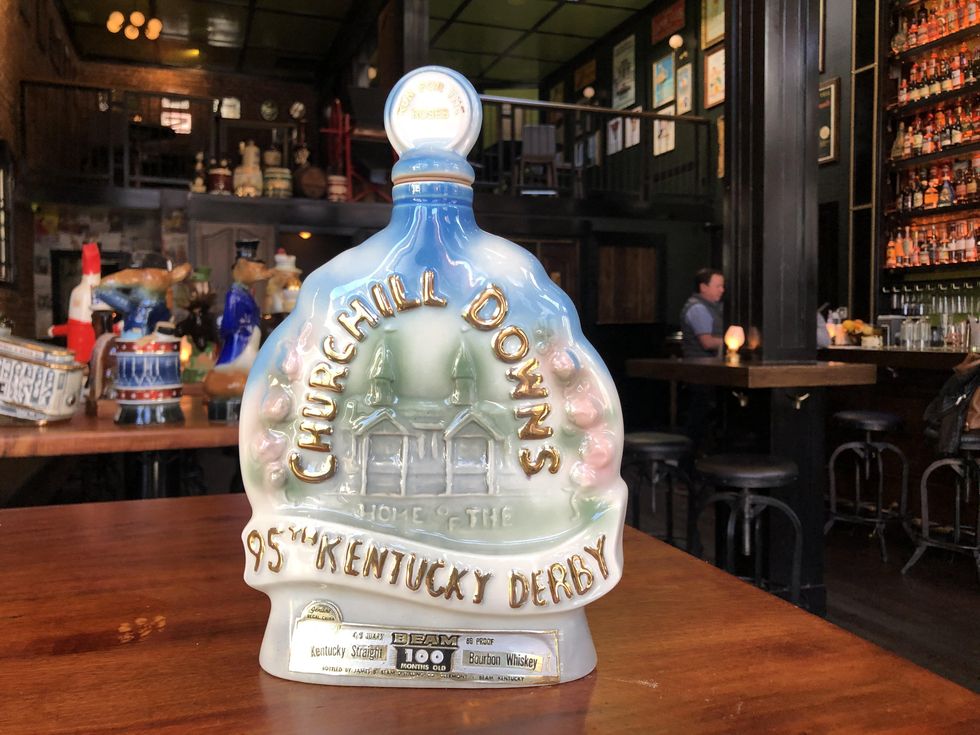
Kentucky Derby, 1969
More 100-month-old Jim Beam whiskey, this time for the 95th Kentucky Derby in 1969. The back of the decanter calls out Aristides, the very first winner in 1875.
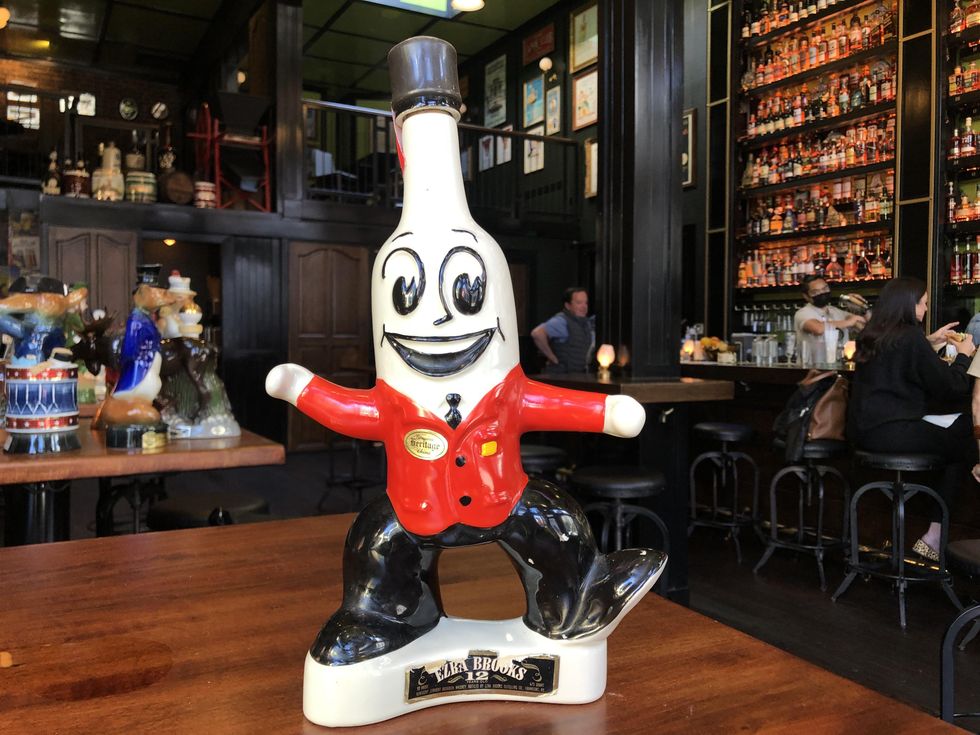
Foremost Liquor, 1969
This one speaks to the times. Sheehy explains that as decanters became popular, businesses such as, in this case, the Chicago-area liquor store Foremost Liquors, began approaching the distilleries to commission designs of their own. These would often be gifted to the top sales person at the store.
// Bottle Club Pub is open 4:30pm to 2am Tuesday through Saturday, 555 Geary St. (Union Square), bottleclubpub.com.













